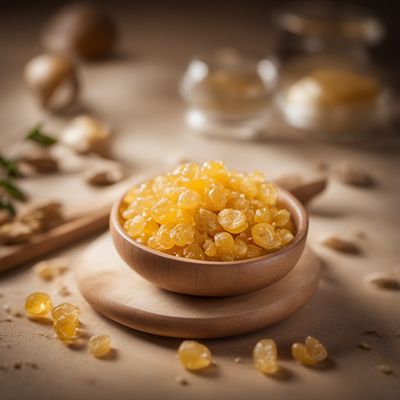
Ingredient
Grenadiers
Exquisite Ocean Gems
Grenadiers are slender fish with elongated bodies and large eyes. They have a silver or grayish color with a hint of pink or orange. The flesh is white, firm, and flaky, with a mild and slightly sweet flavor. The texture is delicate and moist, making it ideal for various cooking methods such as grilling, baking, or pan-searing. Grenadiers are typically sold as fillets or steaks.
Origins and history
Grenadiers are found in deep-sea habitats around the world, particularly in the Atlantic and Pacific Oceans. They have been harvested for centuries, with historical records dating back to the 16th century. Grenadiers are known for their ability to adapt to extreme conditions in the deep sea, where they feed on small fish and crustaceans. Today, sustainable fishing practices are implemented to ensure the preservation of grenadier populations.
Nutritional information
Grenadiers are a good source of lean protein, omega-3 fatty acids, and essential minerals such as selenium and phosphorus. They are low in calories and fat, making them a healthy choice for seafood lovers. Incorporating grenadiers into a balanced diet can contribute to heart health and overall well-being.
Allergens
Grenadiers are a type of fish and may cause allergic reactions in individuals with fish allergies. It is important to exercise caution and consult a healthcare professional if you have known allergies to fish or seafood.
How to select
When selecting grenadiers, look for fillets or steaks that are firm, moist, and free from any discoloration or strong odors. The flesh should have a translucent appearance and bounce back when pressed lightly. If purchasing whole grenadiers, check for clear and bright eyes, intact scales, and a fresh smell. It is advisable to purchase grenadiers from reputable seafood markets or fishmongers that practice sustainable fishing methods.
Storage recommendations
To maintain the freshness and quality of grenadiers, store them in the refrigerator at a temperature between 32-38°F (0-3°C). Keep the fish wrapped in moisture-proof paper or plastic wrap to prevent drying. Consume grenadiers within 1-2 days of purchase for optimal taste and texture. Avoid storing grenadiers with strong-smelling foods to prevent flavor transfer.
How to produce
Grenadiers are wild-caught fish and cannot be easily produced or raised in home settings. They are typically caught using deep-sea fishing methods and require specialized equipment and knowledge. It is recommended to leave grenadier fishing to professional fishermen and support sustainable fishing practices.
Preparation tips
Grenadiers can be prepared in various ways, including grilling, baking, pan-searing, or poaching. They can be marinated with herbs, spices, or citrus juices to enhance the flavor. Grenadiers are often featured in gourmet seafood dishes such as Grenadier à la Provençale, where they are cooked with tomatoes, garlic, and herbs. They can also be used in fish stews, chowders, or fish tacos. The delicate flavor of grenadiers pairs well with light sauces, citrus-based dressings, or creamy butter sauces.
Culinary uses
Grenadiers are commonly used in gourmet seafood dishes and are often featured in high-end restaurants or culinary events. They are sought after by seafood enthusiasts and chefs who appreciate their delicate flavor and tender texture. Grenadiers can be found in various cuisines around the world, including Mediterranean, Asian, and European cuisines.
Availability
Grenadiers are commonly found in deep-sea habitats around the world, particularly in the Atlantic and Pacific Oceans. They are harvested in regions such as Norway, Iceland, Canada, and New Zealand. Grenadiers are often exported to different countries to meet the demand for high-quality seafood.
More ingredients from this category

Alaska pollock
The Versatile Delight: Alaska Pollock

Whiting
The Delicate White Fish

Tusk
"The Ivory of the Sea: Exploring the Delicate Flavor of Tusk"

Haddock
The Versatile White Fish

Cod
The Versatile Delight

Pollack, pollock
Versatile White Fish

Hakes
The Versatile Hake

Ling
The Delicate Delight

Norway pout
The Silvery Delight: Exploring the Culinary Wonders of Norway Pout

Blue whitings
The Ocean's Silver Delight
Recipes using Grenadiers

North Dakota Fry Jacks
Savory Fry Jack Delights: A Taste of North Dakota

Bison Burger with Caramelized Onions and Blue Cheese
Savory Bison Burger Delight

Pastissou with a Native American Twist
Savory Cornbread Pastissou: A Fusion of French and Native American Flavors

Native American-inspired Slow-cooked Pork Carnitas
Smoky Bison Carnitas: A Native American Twist on Slow-cooked Pork